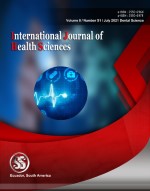Advancements and challenges in nanotheranostics for cancer: A comprehensive review
Keywords:
Theranostic platforms, intelligent nanocarriers, nanomedicine, cancer therapy, nano theranosticsAbstract
Background: The area of nano theranostics, which combines therapeutic and diagnostic capabilities on nanoscale platforms, has the potential to completely transform the way cancer is treated. Despite considerable progress, clinical translation encounters obstacles, including variances in physiological responses between animal models and people, as well as issues related to toxicity and effectiveness. Nanomedicine employs diverse nanoparticles, such as liposomes and gold nanoparticles, to address the shortcomings of traditional cancer therapies. Methods: This work examines the developments and difficulties in the field of nanotheranostics for the treatment of cancer, with an emphasis on the creation of "intelligent" nanocarriers that combine treatments and diagnostics. The assessment encompasses tactics such as passive and active targeting, along with stimuli-responsive systems, emphasizing the potential of radionuclide integration for improved tumor imaging and therapy. Results: Through real-time medication distribution monitoring and controlled release mechanisms, nanotheranostics show the potential to enhance therapeutic effectiveness and safety. Nonetheless, challenges like toxicity, regulatory approval, and scalability impede their clinical translation. Conclusion: To overcome present obstacles and bring nanotheranostics into the mainstream of cancer treatment, teamwork and creative thinking are essential. This emphasizes the need for better preclinical models, updated manufacturing processes, and increased biocompatibility.
Downloads
Published
How to Cite
Issue
Section
Copyright (c) 2021 International journal of health sciences

This work is licensed under a Creative Commons Attribution-NonCommercial-NoDerivatives 4.0 International License.
Articles published in the International Journal of Health Sciences (IJHS) are available under Creative Commons Attribution Non-Commercial No Derivatives Licence (CC BY-NC-ND 4.0). Authors retain copyright in their work and grant IJHS right of first publication under CC BY-NC-ND 4.0. Users have the right to read, download, copy, distribute, print, search, or link to the full texts of articles in this journal, and to use them for any other lawful purpose.
Articles published in IJHS can be copied, communicated and shared in their published form for non-commercial purposes provided full attribution is given to the author and the journal. Authors are able to enter into separate, additional contractual arrangements for the non-exclusive distribution of the journal's published version of the work (e.g., post it to an institutional repository or publish it in a book), with an acknowledgment of its initial publication in this journal.
This copyright notice applies to articles published in IJHS volumes 4 onwards. Please read about the copyright notices for previous volumes under Journal History.
















